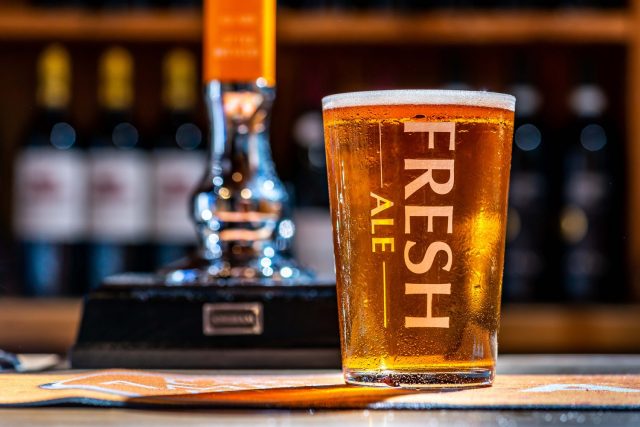New beer category ‘fresh ale’ is introduced
A new beer category, named ‘fresh ale’ has been created by Otter Brewery to bridge the gap between craft beer, cask ale and lager.

‘Fresh ales’ are beers that are initially brewed as cask ales, but instead of being filled into casks they are gently carbonated before being put into kegs.
The Devonshire-based brewery’s first beer being launched as a ‘fresh ale’ is named Amber Fresh and paves the way for “a new form of ale for pubs, designed to be fresh in name and fresh by nature”.
According to Otter Brewery: “Drinkers are looking for beer to be slightly cooler than traditional cask ale, flavoursome and gently carbonated” and the new beer category is, “brewed in exactly the same way as our cask beers…then gently carbonated and racked into a keg…this means the beer will stay in great condition for longer, remaining fresh to drink for weeks, rather than days”.
Otter Brewery insisted that even though US hops play a large role in the delivery of craft beers..all too often craft beers are ‘over-hopped’ to the point where the beer becomes a challenge to drink (arguably a good discussion point), rather than a beer that slips down with ease and invites the next large swig”.
Partner Content
The ‘fresh ale’ beer Amber Fresh still uses the US hop Willamette but is, according to the brewer, “very drinkable and broadly appealing”.
The concept for the fresh ale catgeory echoes CAMRA’s recent plans for its Drink Cask Fresh campaign – formerly titled Drink Fresh Beer that it revealed plans for during last year’s Cask Seminar, hosted by Cask Marque.
During the seminar, beer writer and author Pete Brown who is now heading up the CAMRA campaign, revealed how “more people are drinking cask, but drinking more promiscuously in a bigger repertoire where cask plays a smaller role” and observed that “there is no such thing as a cask drinker” urging people to “think about the market as beer drinkers who drink cask, rather than cask drinkers”.
Brown also highlighted how “the number of women drinking cask has more than doubled” and yet there are many things that the cask category is doing incorrectly to appeal to its audience and added that “freshness of beer is important but, currently, not at all linked to cask” before he pointed out that those who profess to be fans of cask ale actually know very little about it.
CAMRA and SIBA have both been contacted for comments regarding the new category to assertain as to whether they think it will be of positive benefit to the brewing sector and assist macro lager or beer fans in migrating to cask or if it could potentially cannibalise the cask category, but each have stayed silent.
Related news
Majestic pulls some higher ABV wines in wake of duty reforms
Inside Laithwaites' partnership with Channel 4
How low can you go: will en primeur price cuts tempt the market?




